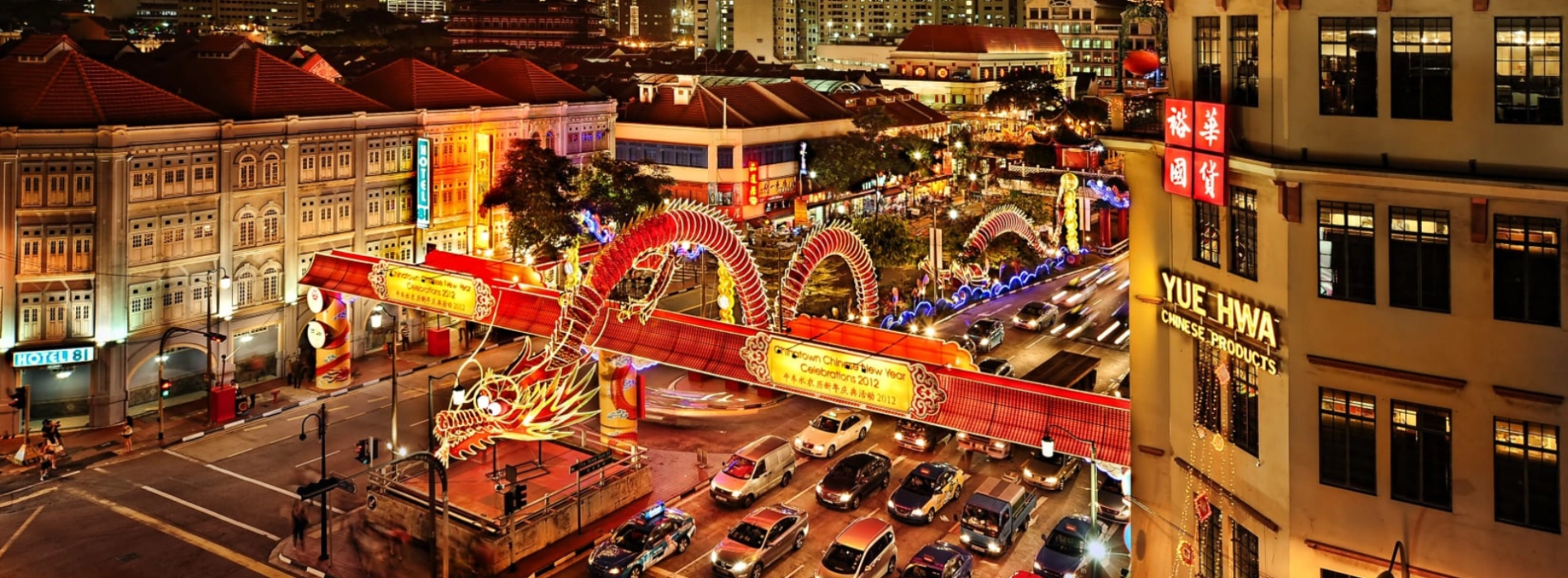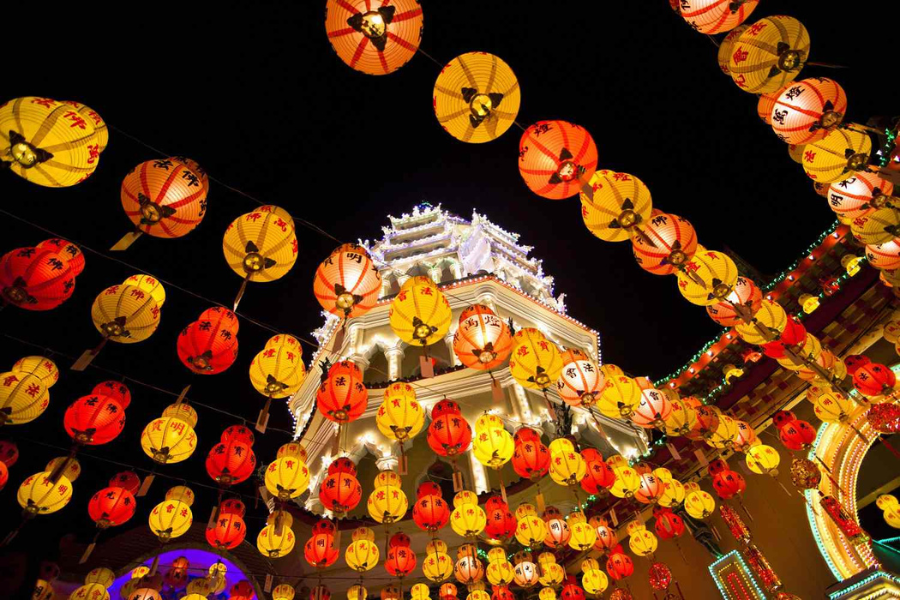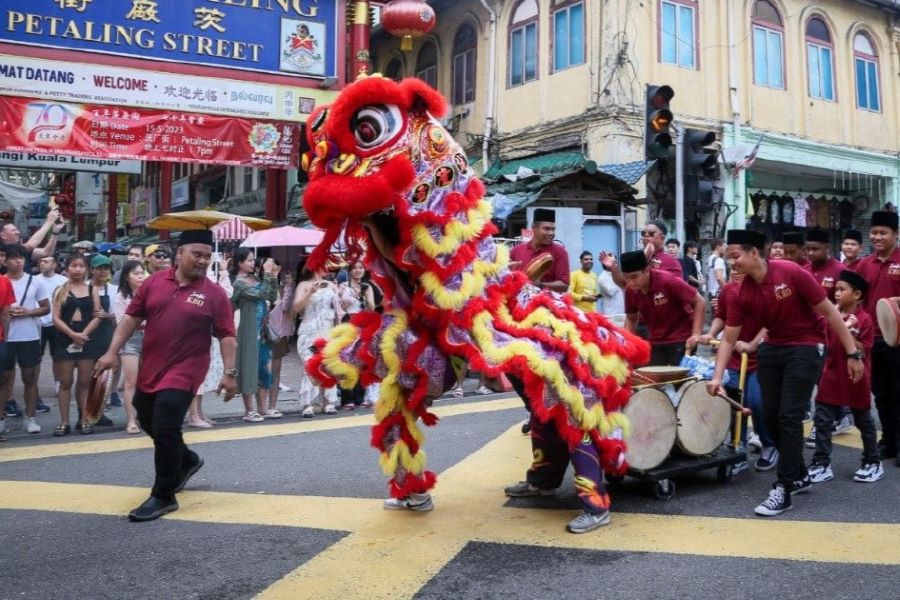
These are done by quite a number of countries in Southeast Asia, such as Malaysia, who have their peculiar traditions and activities that reflect their very own cultures. This paper looks at Malaysia's celebration of the Lunar New Year in comparison with the rest of Southeast Asian nations in light of the shared cultural ancestry, along with the unique regional tastes of each country in its celebration.
Lunar New Year marks the beginning of the year on the lunar calendar and is considered one of the most vital holidays in many countries within East and Southeast Asia.

Lunar New Year in Southeast Asia Introduction (Source: Savy)
This is the time of year for family reunions, homage being paid to ancestors, and appeals for prosperity during the forthcoming year. Countries such as Vietnam, Singapore, Thailand, and Malaysia celebrate this day by incorporating some of their customs with different types of food and jolliness.
Lunar New Year has a very special meaning in Chinese culture, and it is slightly different from country to country. For example, this holiday is called "Tết Nguyên Đán" in Vietnam, while in Malaysia and Singapore, it is called "Chūn Jié", or in other words, Chinese New Year. This is infinitely more than a family reunion to any Southeast Asian, but a cultural festival where people of every background join together to revel and share in the joy of the new year.
The Lunar New Year is one period of festivity in Malaysia, particularly in Kuala Lumpur, Penang, and Melaka, which have large Chinese communities. It is a gazetted public holiday available to all Malaysians, though the major share of it belongs to the Chinese community. The Lunar New Year is not exclusively Chinese in Malaysia; rather, the celebrations transcend different ethnic backgrounds-a reflection of the multicultural nature of the country.
In Malaysia, preparations leading up to the Lunar New Year are quite extensive: cleaning up and arranging homes for good luck to come in and discarding whatever bad luck there is. Elsewhere, this involves painting doors and windows red, the color of prosperity and happiness. A heavy scent of incense fills as families worship ancestors through offerings of food and incantation of prayers.
.png)
Preparation and Celebrations (Source: CGTN)
The most important event in Malaysia is the reunion dinner on the eve of the Lunar New Year, where the family gathers together to enjoy a sumptuous dinner that usually consists of a variety of dishes such as "steamboat" (hotpot), roast pork, dumplings, and fish, which symbolizes plenty of good fortune. In fact, this belief that fish is a symbolism of prosperity is fairly general among the Chinese people in many Southeast Asian countries.
First day of the new year, people usually visit their relatives, give and receive red envelopes called "ang pao", and greet others by saying good things about the new year. The color red signifies luck and happiness and giving money in those envelopes is believed to bring a blessing to the giver and the receiver alike.
Public events also make up one of the major festivals of Lunar New Year in Malaysia. In bigger cities like Kuala Lumpur, celebrations with lion and dragon dances along with fireworks are common sights in public. In particular, "Chingay Parade" constitutes one of the most spectacular traditional street processions of Penang. This makes one of Southeast Asia's largest festivals during Lunar New Year, where colorfully dressed participants perform acrobatics with giant puppets.

Festivals and Parades (Source: Asia King Travel)
These are more popular destinations this time of the year, and Penang is especially famous for its Lantern Festival, where the streets are decorated with thousands of glowing lanterns that give the place an enchanted feel. The "Pavilion" in Kuala Lumpur also hosts some elaborate celebrations that include cultural performances and traditional music reflective of Malaysia's blend of Chinese, Malay, and Indian cultures.
Tết Nguyên Đán, or the Lunar New Year in Vietnam, is one of the country's important holidays. Tết is a time to pay respect to ancestors and visit families to usher in the new year.
.png)
Tet Nguyen Dan (Source: KKday)
Contrary to Malaysia's Lunar New Year, which has a lot to do with reunions, the rituals in Tết of Vietnam are pretty much imbued with spiritual practice.
Preparations for Tết are extensive in Vietnam, where people clean and decorate their homes with peach blossoms-for luck and renewal-in the north, or apricot blossoms-in the south.
.png)
Preparations and Rituals (Source: Vietnam Budget Car Rental)
As in Malaysia, families prepare large feasts, but the cuisine for Tết often consists of very specific dishes, such as "bánh chưng" square sticky rice cakes-and "pickled onions".
The eve of Tết will also find families holding a ceremony called the "cây nêu" Tét tree, where they put up a high bamboo pole and decorate it with fruits, flowers, and all their wishes for the new year. A family spends the first day of Tết visiting relatives, and subsequent days are meant to be used in visiting friends, neighbors, and even offices. Just like in Malaysia, red envelopes or "lì xì" would be given as a major good-luck charm.
Public celebrations in Vietnam are marked by masses, fireworks, and colorfully festive processions. Among them is the "flower markets", vibrant flowers and plants that dot the cities of Hanoi and Ho Chi Minh City for good luck.
Read more: West Coast Malaysia Tour 7 days: A tropical adventure
As Singapore and Malaysia are bound by the same cultural roots, much of the traditions practiced during the Lunar New Year can be said to be similar. Nevertheless, Singaporean Chinese New Year can be said to be unique with the blend of modernity and tradition.
.png)
Singapore: A Melting Pot of Cultures (Source: City Tours)
As in Malaysia, Singaporeans clean their homes in preparation for the new year and decorate them with a view to ridding the home of all bad luck and welcoming in prosperity. The dominating color for the home will, of course, always be that of red-from the hanging red lanterns to the traditional Chinese couplets. Phrases used that wish one good health and wealth; sometimes it may even cover prosperity as well. For sure, at the middle of the celebrations is a family reunion dinner-the dishes standing for abundance and good fortune.
The Chinatown of Singapore presents an ideal ambiance with lights, street performances along with food stalls serving traditional Chinese delicacies. "Chinatown Street" light-up is a fabulous spectacle to watch and draws locals and tourists in huge numbers. Along with traditional lion dances, the city showcases international performances that give the festivities a more cosmopolitan appeal.
.png)
Public Celebrations (Source: Little Tiger Adventure)
Other unique celebrations in Singapore include the "River Hongbao" festival held at the Marina Bay Floating Platform. It comprises large-scale lantern displays, cultural performances, and fireworks that attract people from all over the world.
In Thailand, Lunar New Year is not a holiday, but the holiday does occur, especially in communities with high Chinese populations like Bangkok and Phuket. More generally known as "Songkran" or "Chinese New Year" and celebrations are more subdued than in Malaysia or Vietnam.
Family reunions, traditional foods such as roast duck, dumplings, and sweets, and giving away red envelopes to children and unmarried adults are the characteristics of the celebration. In Thailand's Buddhist temples, prayers are given and offerings are made to ancestors, while lion dances and dragon parades brighten the streets.
.png)
Thailand: A Unique Thai Perspective (Source: Asian Inspirations)
The Thai Lunar New Year incorporates the best elements from Chinese and Thai-most elements, one may say, in "Songkran" or Thai New Year-are espoused into the celebration, the family ritual of splashing water-a ritual believed to invoke good luck on the Thai.
But as much as Southeast Asia celebrates in unison and almost for similar reasons of reunion with families, honoring ancestors, and the wish for a prosperous life, each country imparts its trademark on the holiday. Malaysia's is distinctly multireligious in character, a combination of traditions from Chinese, Malay, and Indian groups. While Tết in Vietnam is deeply imbued with spiritual rituals and ancestor worship, the festival in Singapore was a mix of old and new with grand public events and street parades.
.png)
Comparison of Lunar New Year in Southeast Asia (Source: Travel + Leisure)
Adding to this variegated mosaic of Lunar New Year celebrations across Southeast Asia is the diversity in local delicacies, public events, and spiritual practices. The spirit of the holiday, though, remains just about the same in Malaysia, Vietnam, Singapore, and Thailand-a celebration of new beginnings, family, and the shared hope for a prosperous year in store.
Celebrate Lunar New Year with Asia King Travel! Experience the vibrant traditions of Southeast Asia, from Malaysia's multicultural festivities to Vietnam’s spiritual Tết celebrations. Let us guide you through unforgettable parades, family reunions, and local customs. Book your tour today!
Read more: Classic Highlights Malaysia Tours